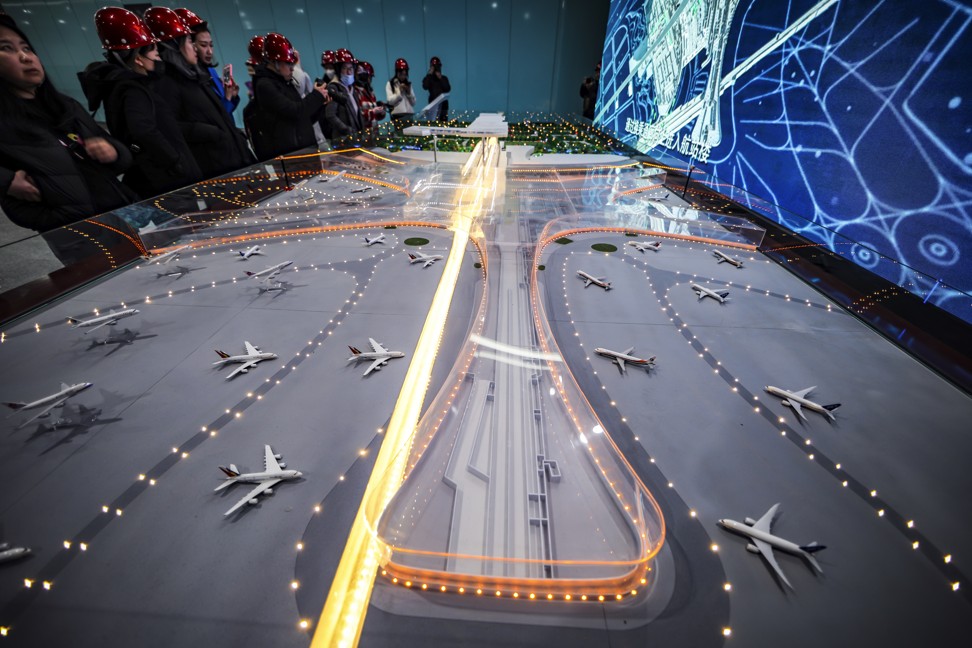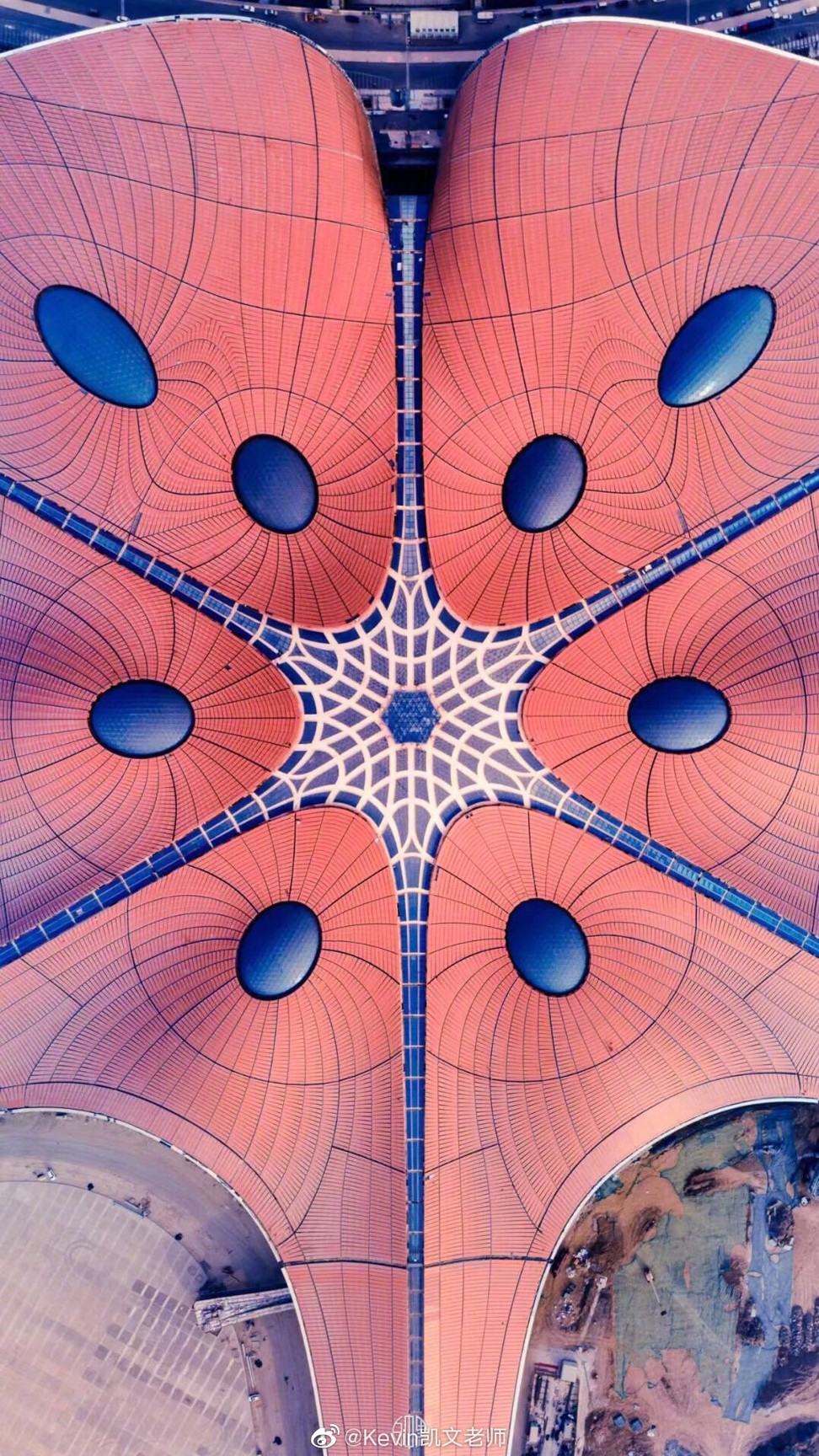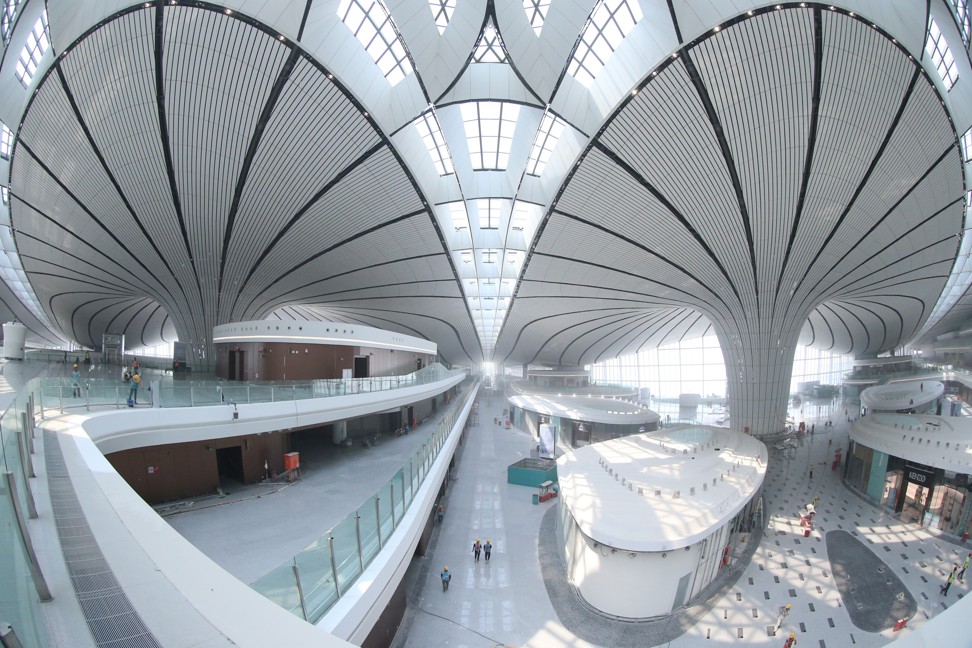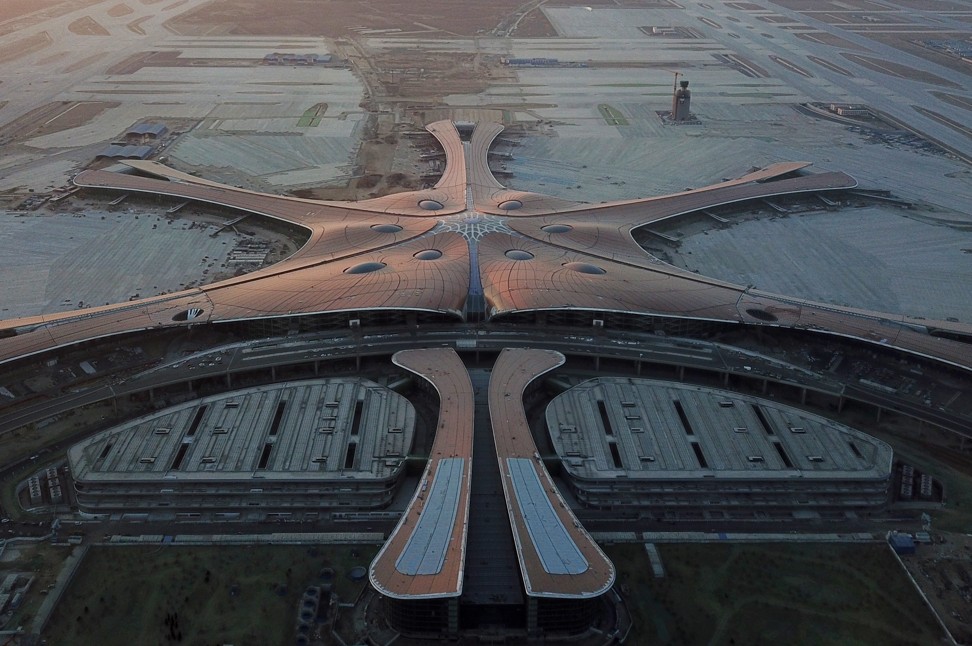5 things we know about Beijing Daxing International Airport, the ‘alien starfish’ opening soon
Beijing Daxing International Airport opens at end of September – handling 300 take-offs and landings an hour, with 45 million passengers by 2021 – and will eventual be the world’s busiest

Beijing Capital International Airport (BCIA), the capital’s main aviation hub, is full. The world’s second busiest airport is also one of the world’s worst for delays
However, that is not surprising when you consider that it served just over 100 million passengers last year, against a theoretical capacity of 85 million – despite adding an extra terminal as recently as the 2008 Olympics.
Fortunately, help is at hand: taking up the slack and then some is Beijing Daxing International Airport.
Located south of the capital, it opens at the end of September – after construction was completed in June – and is expected to eventually become the world’s busiest.
Will it have what it takes to be one of the world’s best airports, joining the ranks of Singapore’s Changi and Qatar’s Hamad?
Check out what we know so far about Beijing’s new mega-airport.
Its numbers are pretty mind-boggling

Daxing will be able to handle 45 million passengers by 2021, with plans for 72 million by 2025 and 100 million by 2040, along with four tonnes of cargo. It will start life with four civilian runways, with plans for seven; its initial capacity will be 300 take-offs and landings an hour.
The entire airport site takes up 47 square km (18 square miles – more than half the size of Hong Kong Island, while the main terminal takes up 7.5 million square feet (695,000 square metres), making it the largest in the world.
With an appearance like a giant six-armed alien starfish squatting over the landscape, Daxing is the first airport designed by the late Iraqi-British architect Zaha Hadid, renowned for her monumental, experimental, aggressively curvilinear work
Despite that, it took only five years to build, at a cost of 80 billion yuan (US$11 billion) – but with all the associated costs – probably about 120 billion yuan. Testing began in May, with the first full-scale test in July, involving more than 6,000 people, including more than 1,000 pretend passengers.
The Civil Aviation Administration of China says the airport will generate 600,000 jobs.
It also means Beijing joins the select group of cities, including Tokyo, London, Paris and New York, that have two long-haul international airports.
It will be visually spectacular – inside and out

With an appearance like a giant six-armed alien starfish squatting over the landscape, Daxing is the first airport designed by legendary Iraqi-British architect Zaha Hadid, renowned for her monumental, experimental, aggressively curvilinear work, who died in 2016 before she was able to see the project to fruition.
Her company worked with French planners ADPI and the Beijing Institute of Architectural Design, while Hong Kong studio Lead 8 has designed the integrated service building.
According to Hadid, the design “evolved from principles within tradition Chinese architecture that organise interconnected spaces around a central courtyard”.
Beijing Daxing International Airport evolved from principles within tradition Chinese architecture that organise interconnected spaces around a central courtyard
The central atrium, with curves like a rolling landscape, is supported by eight giant C-shaped columns, each with a 106-metre (350- foot) wide skylight at the top – filling the terminal with natural light – while accompanying the departure lounges are five traditional Chinese courtyards.
Tradition also unexpectedly reared its head during the construction of the airport, when workers discovered a Qing dynasty (1644–1911)-era graveyard on the site.
The starfish design is extremely space efficient, with a journey of just 600 metres from security to the furthest gate – plus checking in is mostly automated.
It will, naturally, be a luxury retail ‘Babylon’

We do know there will definitely be a spectacular line-up of luxury fashion and beauty brands at Daxing; we just don’t know yet exactly which ones, with very little detail released about the airport’s luxury offering, or indeed about what will be available in the terminal generally.
There has been an intensely political negotiation between the nation’s three big state-owned airlines, Air China, China Eastern and China Southern, over who gets to fly in and out of the airport
The landside facilities will be operated by China Resources Land, and promise to include the usual shops, restaurants and entertainment, plus childcare facilities and even a pet hotel; and China Duty Free Group has secured 10-year contracts to supply duty free alcohol, tobacco, food, fashion and beauty.
You will also be able entertainment yourself: the airport will have its own 5G basestation. Initially, there will not be any airport hotels; as things stand the nearest options, about 10km (6 miles) away, are Four Points by Sheraton Langfang, Guan and JI Hotel Beijing Daxing Airport.
Airlines have been scrabbling to take advantage of it

There has been an intensely political negotiation between the nation’s three big state-owned airlines, Air China, China Eastern and China Southern, over who gets to fly in and out of the airport.
The original plan was for China Eastern and China Southern to get 40 per cent of the new airport’s capacity each, but China Eastern has traded a quarter of this with Air China, so that the latter gets 10 per cent of the capacity, in return for the former keeping its plum Beijing-Shanghai route from BCIA.
With plans for Daxing to become the biggest airport in the world, a lot of foreign airlines will end up basing their Beijing operations there.
For the time being they are mostly taking an agnostic view, operating flights from the new airport but remaining based at BCIA for the time being.
British Airways, though, has moved its Beijing base there, and the members of Skyteam, the airline alliance that includes the likes of Delta, KLM, Air France, Garuda, Korean Air and China Airlines, are expected to follow suit.
It will become a new transport hub for the greater Beijing region

Located 46km south of Tiananmen Square, Daxing is further from the city than BCIA. Fortunately, there will be plenty of efficient ways to tackle the journey by train and subway, all departing from a station beneath the main terminal, which has been equipped with more than 1,000 rubber anti-shock cushions to reduce vibration.
The Daxing Airport Express will initially run from Caoqiao in southern Beijing, with plans to expand it north to Lize Business District station, where in-town check-in will be available.
With trains running every six and a half minutes, it will be the fastest subway in China, travelling at speeds of up to 160km/h (100 miles per hour). Transit Line 20, also known as Line R4, meanwhile, will connect the new airport with Beijing Railway Station and BCIA.
Currently under construction are the Beijing-Xiongan intercity railway from Beijing West railway station, which will reach central Beijing in only 11 minutes, and the Intercity Railway Connector between the two airports.